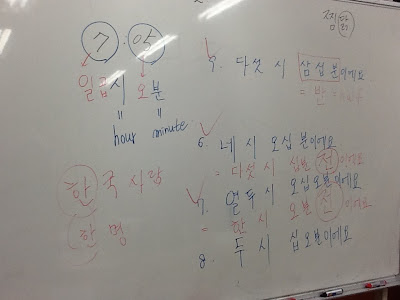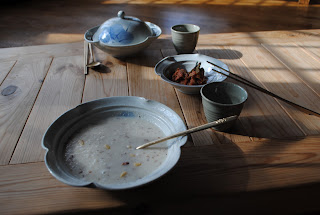"If you talk to a man in a language he understands, that goes to his head. If you talk to him in his own language, that goes to his heart."
Nelson Mandela
Many people believe that learning a language is required to really understand a culture. If that is so, learning to speak, at least some Korean, may be your ticket to gaining insight into this amazing place called Korea. I was fortunate. I first came to Korea as a U.S. Peace Corps Volunteer. That organization ensured that all its volunteers had three months of intense language and cultural awareness training. It was a free-pass to the living museum that is Korea--a gift that I did not fully appreciate at the time. I do now.
 |
| Thumbs Up! Learning Korean at Yeungnam University's Korean Language Institute |
There has never been a better time to learn the language and the culture. Your efforts will reap immediate benefits. You will see Korea through a richer and more intimate prism. Koreans will generally react very favorably to your efforts to learn their language and explore their culture. For more about how many Koreans react to foreigners learning Korean visit
Fortunately, there are numerous avenues for learning Korean and for exploring Korean culture. Many local universities and language institutes offer both language and culture courses. For example,Yeungnam University in Gyeungsan, conveniently situated on the green line, has its Korean Language Institute. http://www.goabroad.com/
Private language institutes and other organizations provide numerous meeting and cost options. The Daegu YMCA, for example, has a variety of language levels and class meeting times. They also offer cultural classes related to Korean cooking, art and traditional musical instruments. Go to http://www.tgymca.or.kr/html/main.html, then click on "Home" for the Winter/Spring schedule of classes.
The internet offers even more language learning options. Two recommended online language learning vehicles are Learn Korean Online http://www.learn-korean.net/ and Livemocha http://livemocha.com/
One can always choose to live in Korea without learning the language. But the wisdom of the ages strongly suggests otherwise."To have another language," said Charlemagne, "is to possess a second soul."
One can always choose to live in Korea without learning the language. But the wisdom of the ages strongly suggests otherwise."To have another language," said Charlemagne, "is to possess a second soul."





























